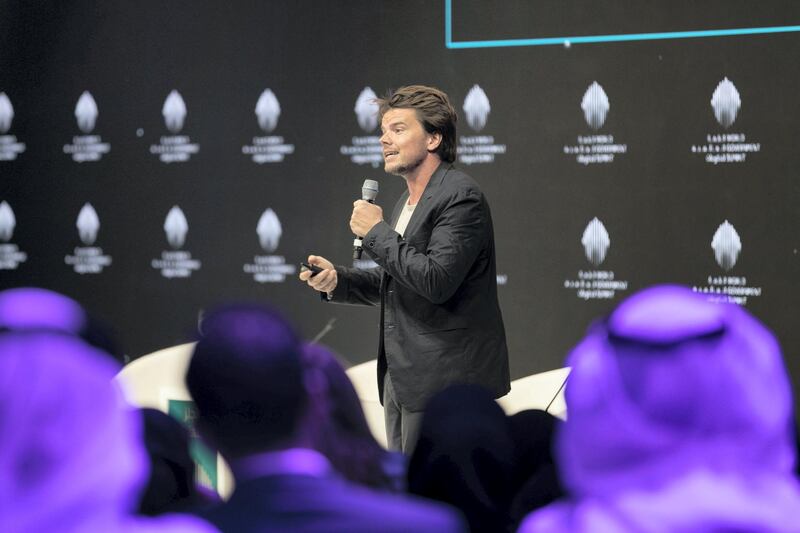When humans colonise Mars they could be living underground and 3D printing building materials and electronics from the planet’s natural resources, says the designer of Dubai’s Mars Science City.
The Mirdif Park science centre, which will replicate the way experts expect humans to live on the Red Planet, is being designed for the Mohammed bin Rashid Space Centre by Bjarke Ingels, the founder of the BIG architectural group. BIG are best known for cutting edge projects like the Lego headquarters in Denmark and Abu Dhabi’s Warehouse 421.
The technologies that will be developed at Mars Science City will be the first steps in humans “becoming a multi-planetary species”, Mr Ingels said.
The architect told the World Government Forum that out of all the planets in our Solar System, Mars is the most suitable destination for a new settlement and is reachable in only three months with existing rocket technology.
“There are all of the ingredients to sustain life on Mars using exactly what is already there,” he said.
The Summit heard how, once colonised, machines, including 3D printers, would use Mars’s natural resources, such as frozen water, sand, rocks and gases in the atmosphere, to create everything from Martian concrete and glass to electronics, plastics and steel.
Although the planet’s environment poses a number of challenges to human survival, such as a high radiation, no air and a lack of easily accessible water, Mr Ingels pointed out that, “Here on Earth, we humans have already been good at surviving hard climates.”
He gave the examples of underground homes in Tunisia, cave dwellings in the American south west and igloos used by the Inuit in the Arctic.
By sleeping underground on Mars, he said, it would be possible to reduce radiation levels to less than those experience by airline crew. Food would be locally grown, and rocket fuel made on the planet could refuel spaceships for return journeys.
The research carried out at Mars Science City will also have practical applications to improve life here on Earth.
_______________
Read more:
[ World Government Summit: setting the stage for the future ]
[ Why being the world's only cyborg can be a real headache ]
World Government Summit: UAE event a catalyst for change, incubator of ideas
_______________
“If you imagine over the next two centuries by slowly turning Mars from a red planet, to a green planet, to a blue planet, imagine what it takes to make Mars into an entire manmade eco-system.
“It’s what’s going to make us the most capable custodians of the planet we inhabit today.”
In a couple of decades, Mr Ingles said, “imagine our children or grandchildren looking up at the Martian sky and seeing … this little blue speck seen from the surface of Mars, which is actually Earth, but looking at it from a planet we would now call home.”







